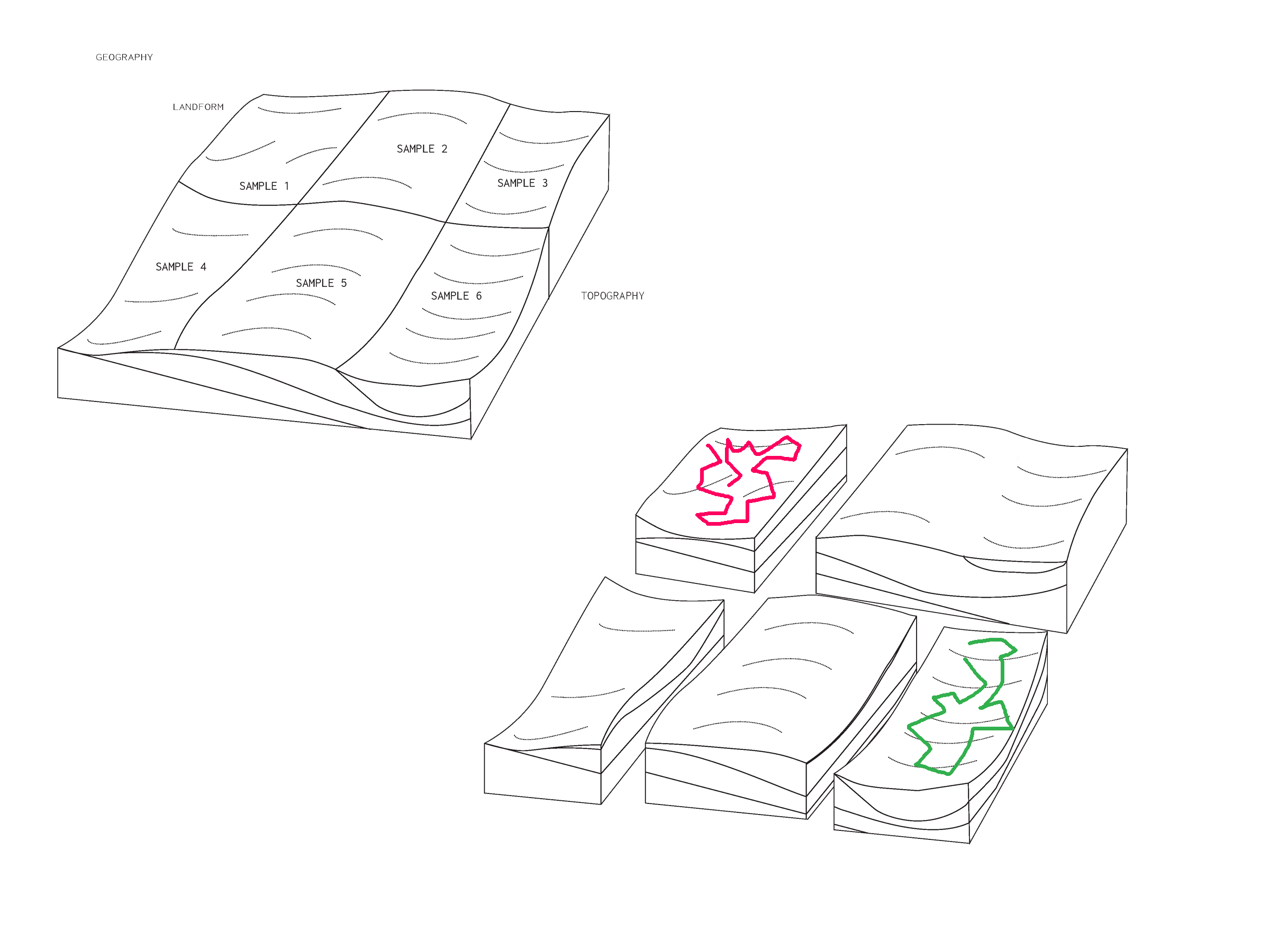SAMPLING
Soil is between spheres; between biosphere, atmosphere, geosphere, visible only at high resolution. The metrics of soil sample analysis afford perspectives of soil as it relates to atmosphere and geology in a system, as well as to political and economic processes; how permeable it is, what it originates from by identifying parent material and geologic formations, how it relates to geology by depth to lithic and paralithic bedrock, adjacencies to ecology in what natural habitat it facilitates, relationship to climate in how much precipitation and temperature a soil unit experiences, its natural resource potential; how fertile it is for cultivation or forestry or extraction. Core samples seek valuable deposits of the past deep within the rock. Cores measure stratigraphy, at a resolution for sensing rock formations the size of states or continents. Soil samples also measure stratigraphy, with a resolution fine enough to detect the intricacies of material. Both sampling methods encode the biosphere, atmosphere, and geosphere as media. [1]
Using the soil sample, borrowed from environmental science for architectural analysis, we adopt methods of sampling to divorce sectional geologic data from extractive economies. Sampling in this way relates the material realities of the anthropocene to their relationship to geo-to-atmo at the scale of the individual.

Geologic data is funded, researched, and drawn only in those areas where fossil capital is sought. This means that our planetary section is - in more ways than one - beholden to petroculture. We could only draw, at the planetary scale, those geologies which had data - those that had the promise of oil.

This path zigs and zags like the oil-seeking path, but rather than the exceptional, this path seeks the unremarkable. In order to analyze the material realities of the anthropocene with data that is collected free from the fossil economy, we have taken our own samples.



We use the methods of soil sampling, but we are sampling our own material realities, not the necessarily soil as in, surface geology. These material realities tell a story of the mundane recent past. These are intentionally arbitrarily gathered samples from our lives. This is anthropocene at the scale of Mary and Meg. In doing sampling at the scale of ourselves, we break our own rule, we do not follow the section cut or the antipode, but we reveal what the planetary section forecloses. The haptic scale can only be measured at ourselves.
Soil systems are often viewed as open systems. From a soil-only perspective, soil can change states with additions or subtractions of minerals, water, nutrients. Soil processes these materials in and out. In doing so, soil participates as a part of a more complex closed system at the scale of the planet, a system of climate, hydrology, ecology, geology. The nature of this closed system, the sum of all -spheres related to our home planet, is that it retains all energy which is exhausted. The energy simply changes forms: from its origin as a fossil, to a zap of power, to a simple comfort, and into the atmosphere. [2] The atmosphere retains every particle emitted on Earth, and geology records every piece of matter existing on Earth. Soil science acknowledges the relationships between the closed system of earth and how soil is imprinted with information of the globe, a media of surface geology.
The planetary section is austere in its loyalty to data. To draw cores and write of samples from distant places in the anthropocene, we must rely solely on data, reports, and digital media. With soil sampling, we take samples of the unremarkable and ordinary at the scale of the individual, at the scale of ourselves within the planetary chronology. This information can help support research in the Archive of the Recent Past.
If you would like to sample at the scale of yourself, write and we will send you a vial and log.
>


















